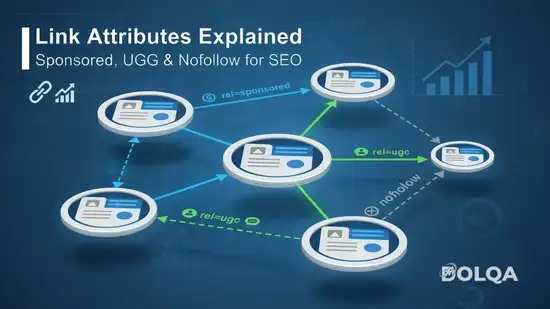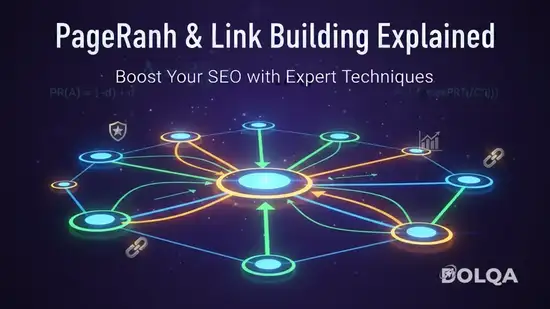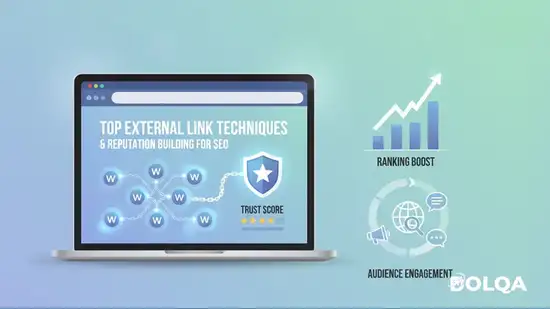Introduction
Link attributes play a crucial role in modern SEO and website management. Understanding how to use rel attributes, such as rel="sponsored", rel="ugc", and the evolving nofollow hint, allows webmasters to clearly indicate the purpose of links to search engines and maintain site credibility. Proper usage ensures search engines interpret your links correctly, prevents penalties, and enhances link equity distribution.
In this article, we will explore the technical specifications, practical usage, and strategic importance of these link attributes, helping both beginners and SEO professionals optimize their linking strategies.
What Are Link Attributes?
Link attributes are HTML elements that provide additional information about a hyperlink to both browsers and search engines. The primary purpose is to:
Communicate the nature of the link
Influence how search engines treat the link
Enhance site security and credibility
The most commonly used rel attributes in SEO today include:
rel="nofollow"(and its modern evolution, the nofollow hint)rel="sponsored"for paid or promotional linksrel="ugc"for user-generated content
1. rel="sponsored"
Definition and Purpose
The rel="sponsored" attribute is specifically designed for links that are part of a sponsorship or paid advertisement. Using this attribute helps:
Identify paid content to search engines
Prevent passing undeserved link equity from promotional links
Maintain transparency with users and Google’s guidelines
Practical Implementation
<a href="https://example.com" rel="sponsored">Sponsored Content</a>Best Practices
Always mark advertisements, sponsored posts, and affiliate links with
rel="sponsored".Combine with
nofollowif you want to ensure no link equity passes.Regularly audit your site to verify all paid links are properly tagged.
2. rel="ugc"
Definition and Purpose
rel="ugc" stands for User-Generated Content. It is intended for links within forum posts, blog comments, reviews, or other content submitted by users. This signals to search engines that the link is not fully controlled by the site owner, which helps in avoiding penalties from spammy or low-quality submissions.
Practical Implementation
<a href="https://example.com" rel="ugc">User Comment Link</a>Best Practices
Use
rel="ugc"for all user-contributed links.Can be combined with
nofollowif necessary.Helps maintain site credibility and reduces risk of spam influence on PageRank.
3. The Evolving Nofollow
Definition and Evolution
Originally, rel="nofollow" instructed search engines not to follow a link, effectively preventing it from passing PageRank. In September 2019, Google announced a modern approach: nofollow can now be treated as a hint, rather than a strict directive. This allows Google to choose whether to count the link for ranking purposes, depending on context.
Practical Implementation
<a href="https://example.com" rel="nofollow">External Resource</a>Best Practices
Use
nofollowfor links you don’t fully endorse.Combine with
sponsoredorugcwhere appropriate.Understand that nofollow is now a flexible signal rather than a strict rule.
Combining Link Attributes
It is possible to combine multiple rel attributes to clearly convey link purpose:
<a href="https://example.com" rel="ugc sponsored nofollow">Example Link</a>Sponsored + Nofollow: Paid user-generated content
UGC + Nofollow: User-submitted links without endorsement
Proper combination ensures clarity for both users and search engines, maintaining trust and link integrity.
SEO Implications and Benefits
Using these link attributes correctly:
Prevents penalties from unnatural or spammy links
Optimizes link equity flow across the site
Improves site reputation by signaling transparency
Helps search engines understand link context, enhancing crawl efficiency
Statistics & Data: According to Google’s Search Central, sites that correctly use rel="sponsored" and rel="ugc" are less likely to face manual penalties for unnatural links. Regular audits show a 20–30% reduction in link-related SEO issues for properly attributed links.
Recent Updates
Google now treats nofollow, sponsored, and ugc as hints, giving more flexibility in ranking signals.
The use of structured data in combination with link attributes can further enhance SEO insights.
SEO audits increasingly focus on attribute accuracy, ensuring that every external link is correctly labeled.
Conclusion
Mastering link attributes is essential for modern SEO. Correctly implementing rel="sponsored", rel="ugc", and evolving nofollow hints ensures that your website maintains credibility, prevents penalties, and optimizes link equity flow. Regularly auditing and updating link attributes is a best practice for long-term SEO success.
Source: Dolqa – Technical SEO, Backlinks, and Link Building






Comments (0)
Leave a Comment
No comments yet. Be the first to comment!